The Nikon cameras that I’ve used give you a choice of two color spaces: sRGB and Adobe RGB. If you’re shooting raw, does it make any difference which you pick? I figured not, but I always picked Adobe RGB just in case. Today I decided to do an experiment to confirm or deny my assumption.
I put a D4 on a tripod, set the exposure using the corrected histogram (love that!), set the color space to Adobe RGB, and took a picture. Then I set the color space to sRGB and made another exposure. Then I set the color space back to Adobe RGB and make a final exposure.
The scene:
The raw histogram of one of the Adobe RGB images:
The Rawdigger stats on one Adobe RGB image:
The Rawdigger stats on the other Adobe RGB image:
The Rawdigger stats on the sRGB image:
It appears that the image data is the same in all three images, modulo some small statistical variation because I was imaging a natural scene, with wind-moved tree branches and such. Therefore, the sRGB vs Adobe RGB setting in the camera makes no difference to the raw data recorded, which is presumably in the sensor’s native color space.
The D4 does put the color space in the EXIF data, but that must be for rendering the JPEG preview image, or possibly as a hint to some raw converter. Lightroom ignores this field, as far as I can tell.
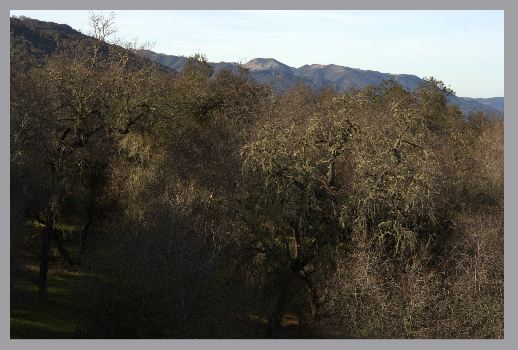
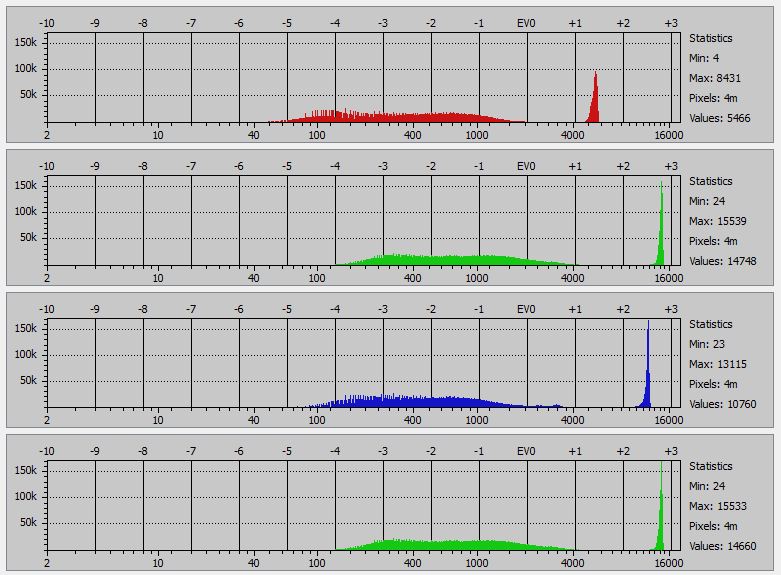
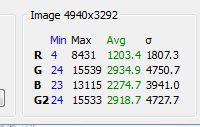
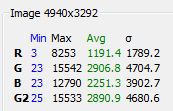
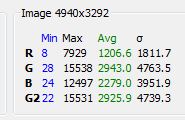
Leave a Reply